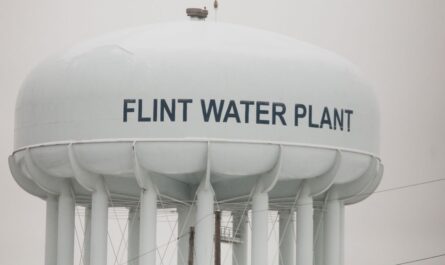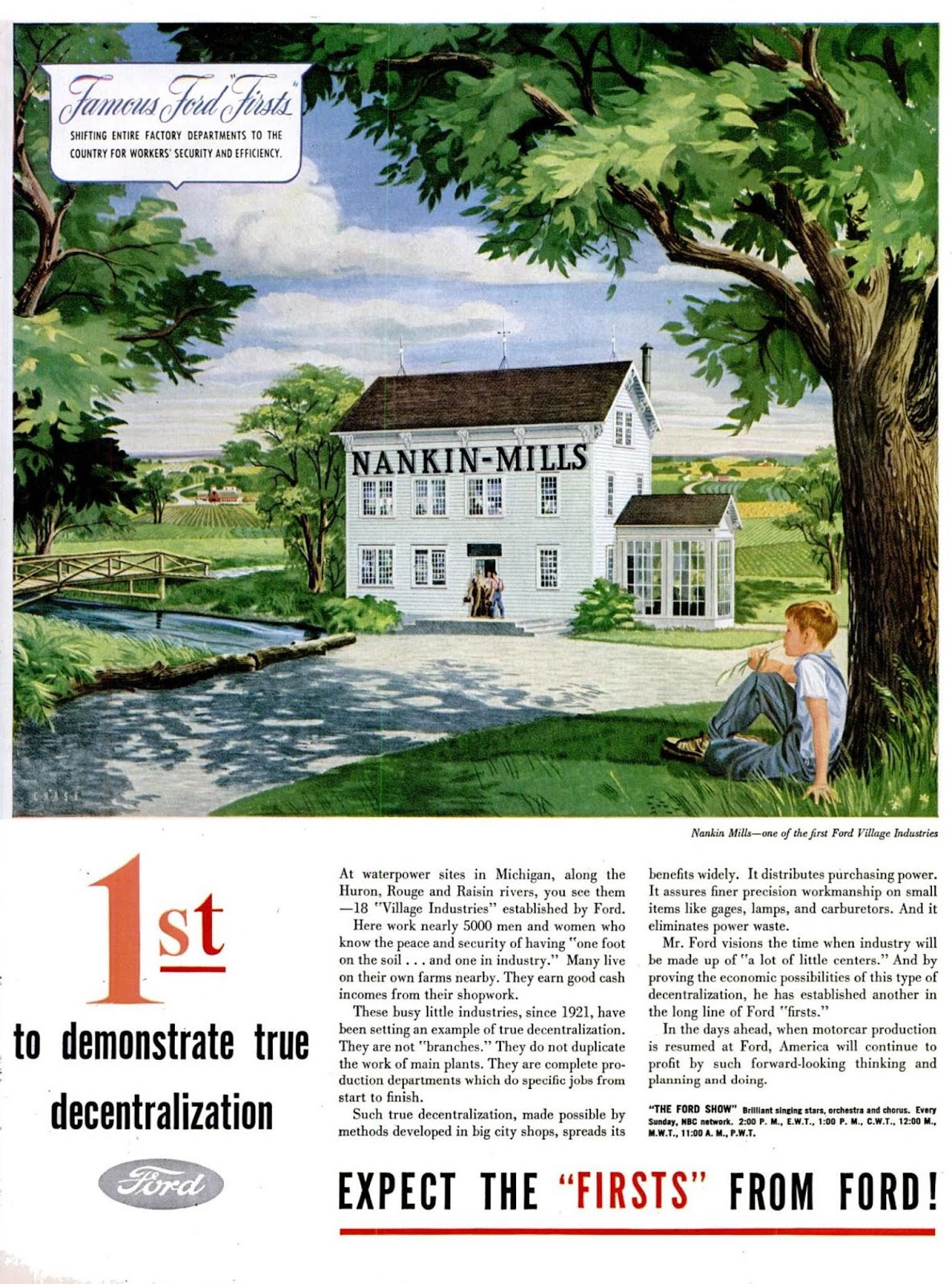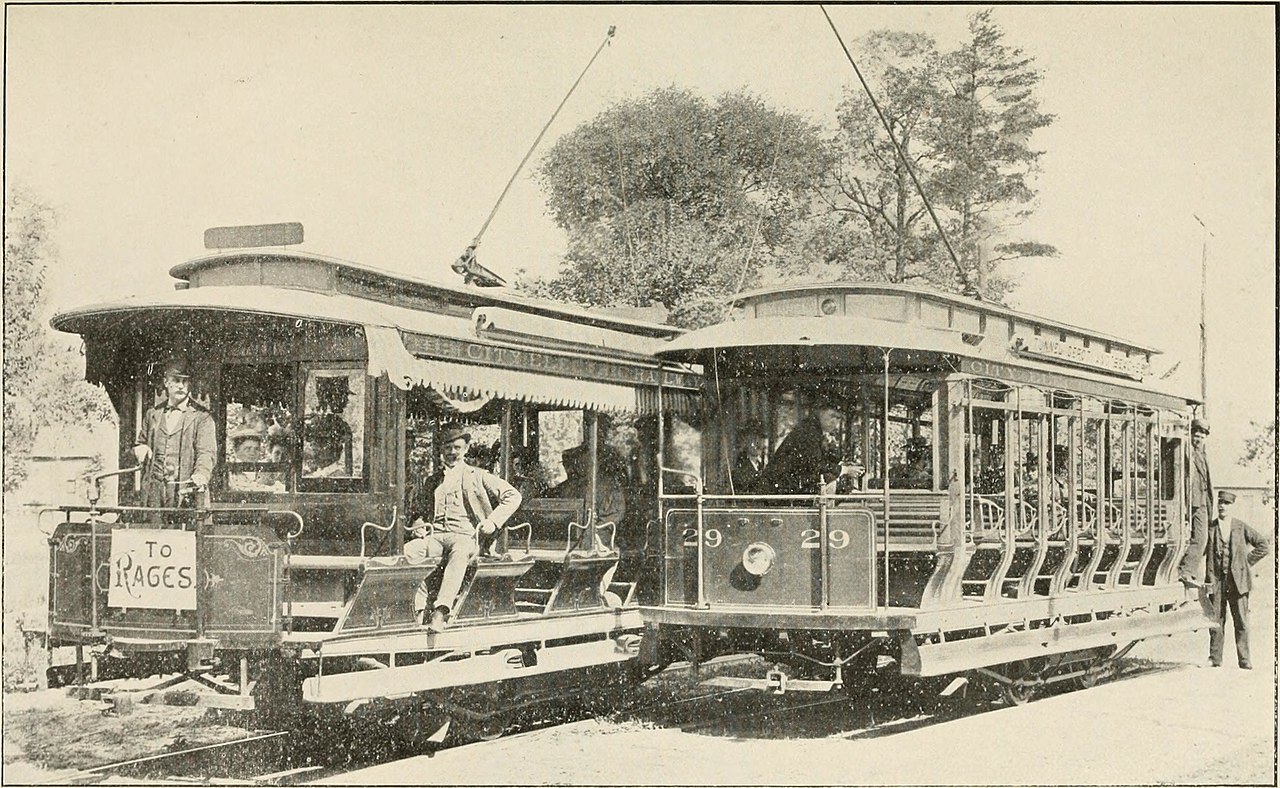The history of Alpena Michigan is a story of transformation shaped by lumber, limestone, and Lake Huron. Once one of the busiest lumber ports on the Great Lakes, Alpena shifted from timber to cement as industries changed. Along the way, residents rebuilt after devastating fires and created traditions like the Winter Carnival that defined community spirit. Today, the history of Alpena Michigan reflects both industrial innovation and a proud small-town heritage that continues to attract attention.
Table of Contents
Video – Steam Engines and Snow Trains: Alpena, Michigan’s Story
The Early Years and Lumbering Heritage
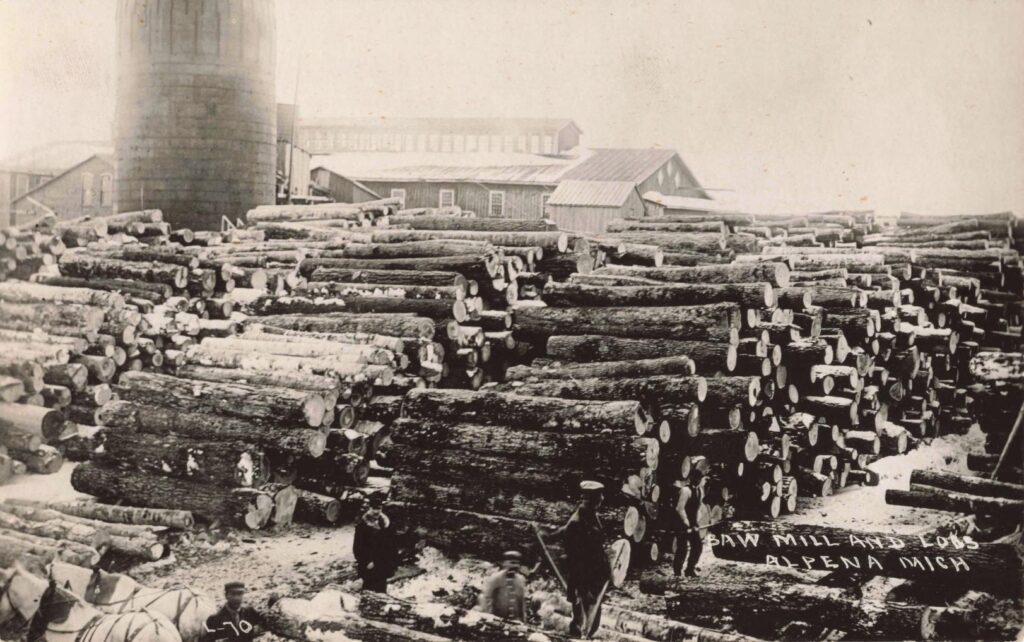
The history of Alpena Michigan begins deep in a northern wilderness. In 1856, Sarah and Daniel Carter arrived here from Canada to build a sawmill. Mrs. Carter became renowned as the settlement’s first doctor and nurse, treating pioneers even before a proper hospital existed. Her tiny cabin also hosted Alpena’s first church services and visitors’ lodging, as more settlers were drawn to the Thunder Bay River valley.
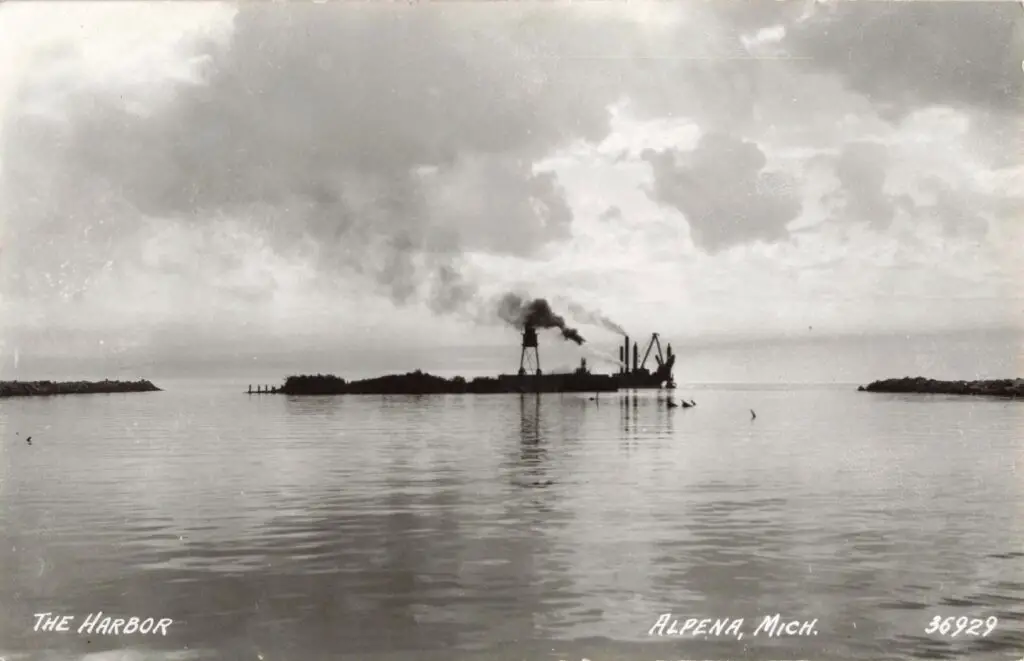
By 1871, the fledgling village was officially incorporated, its shoreline harboring fishing boats and work-gangs of lumberjacks. Rich stands of white pine around Alpena made the town famous for lumber. According to local history, Alpena quickly became “one of the nation’s most profitable lumber harvesting locations”.
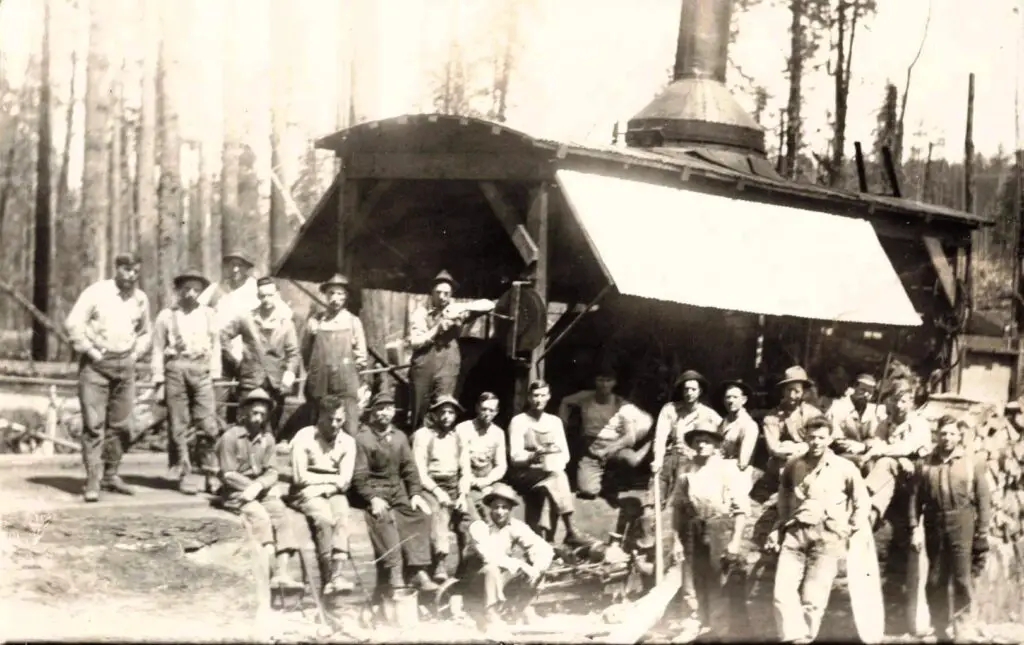
Lumber camps dotted the surrounding forests, while crews organized log drives in winter. Each spring those logs were floated down the Thunder Bay River to the harbor. There, sawmills sliced them into boards or loaded them onto Great Lakes ships bound for markets as far away as Chicago, New York and beyond. On its busiest days, Alpena’s port saw up to 2,000 ships a year, and by the late 1800s the town was shipping out literally billions of board feet of timber.

This lumber boom shaped Alpena’s identity. Money flowed in, wood-framed buildings sprang up, and residents prided themselves on modern comforts. Amazingly, Alpena installed its first telephone just three years after Alexander Graham Bell’s patent, and electric streetlights only two years after Edison’s lightbulb. Business thrived and more amenities followed – so much so that locals called Alpena “the boom town that wouldn’t bust”.
Industry and Innovation in the Early 1900s
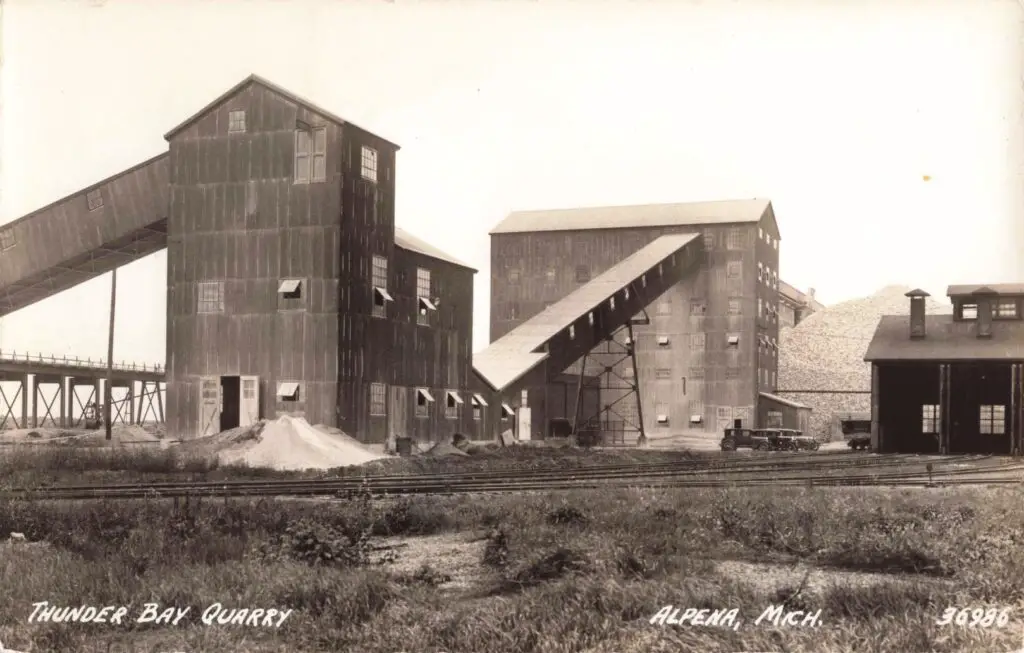
As the 20th century arrived, the forests were thinning. The great lumber era was slowing by the 1890s, and Alpena had to find new ways to sustain itself. Residents showed creative grit. In 1910 local entrepreneurs even attempted to make cars, dubbing Alpena “the Automobile City,” but they quickly realized they couldn’t compete with Detroit’s factories and the idea was scrapped.
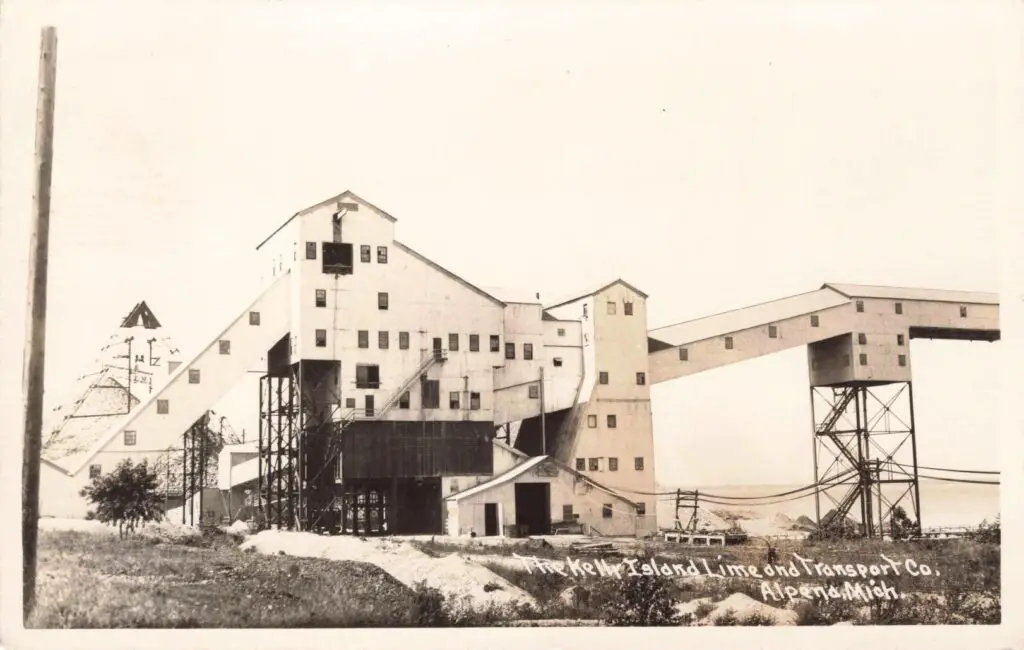
Instead, Alpena turned to what lay beneath its feet. The region is rich in limestone and shale. One of the world’s largest shale quarries opened here, eventually supplying raw materials for cement. Legendary inventor Herman Besser and his son Jesse also lived in Alpena. In the early 1900s they perfected a concrete-block machine that revolutionized building construction. Blocks made by Besser’s machines were used nationwide, and cement factories sent freighters full of concrete products out of Thunder Bay. With this new industry, Alpena’s economy shifted from cut trees to built structures. Factories and quarries provided jobs long after the lumber barons had moved on.
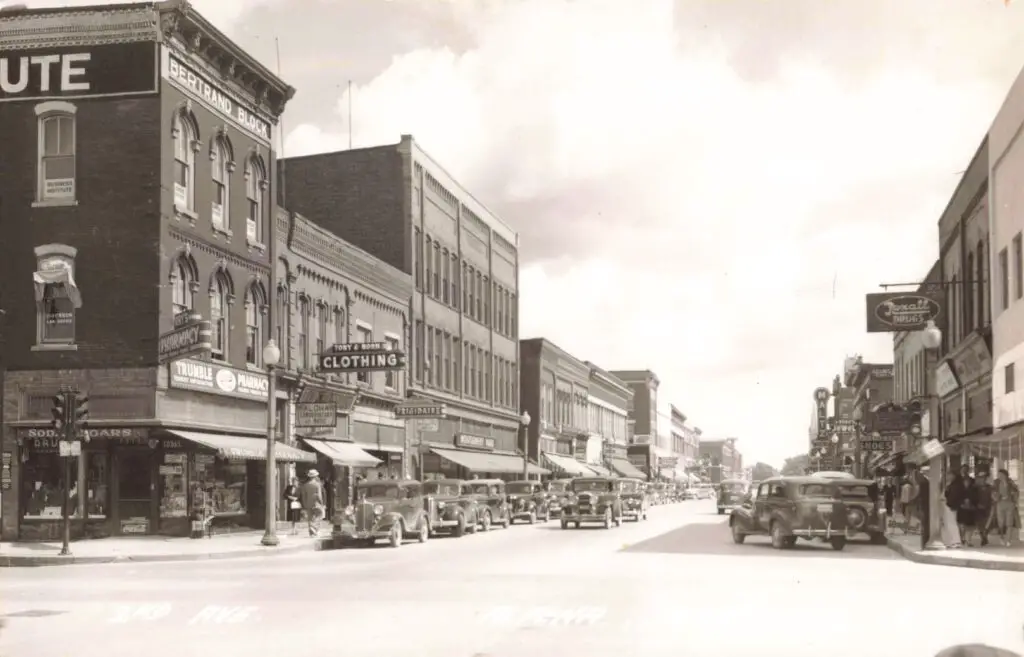
By mid-century the town had a very different skyline. The steam sawmills gave way to brick buildings, shipping lumber’s successor: cement. A local cement company (now part of Lafarge North America) became a major employer, and Alpena’s theme had changed from red pine to gray dust. The town still had lumber influence – many wooden downtown buildings and historic homes survived – but industry had diversified. This reinvention is a key thread in the history of Alpena Michigan: the town’s ability to move from fish to logs, then to cement and beyond kept it alive while many other logging communities vanished.
Pioneer Women and Lighthouse Keepers
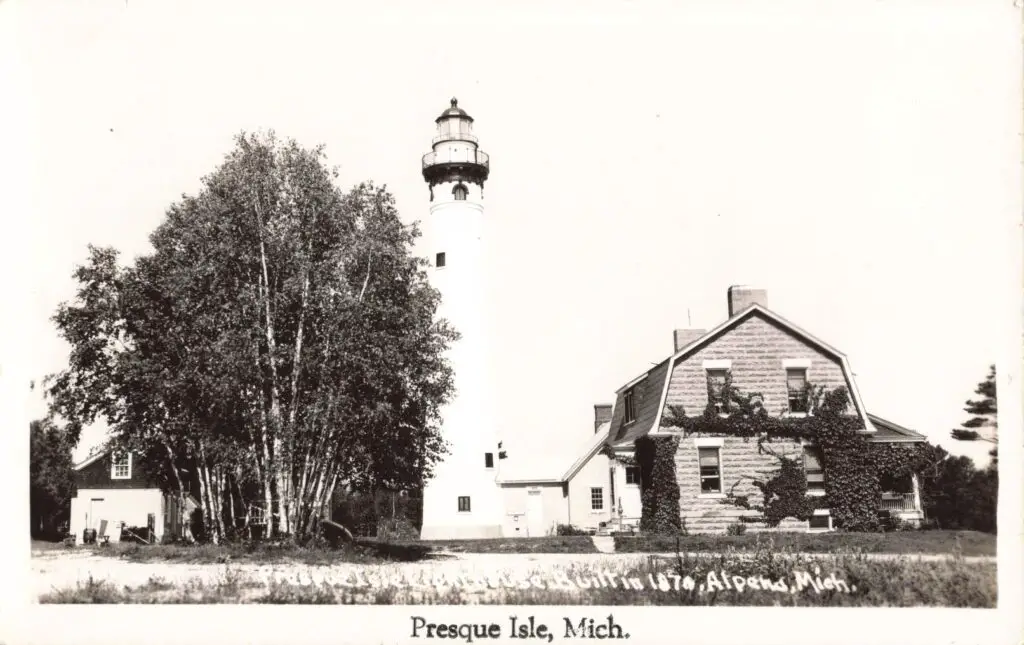
Much of Alpena’s story is told through its people. Sarah Carter, mentioned above, symbolizes the town’s early spirit. She arrived as a new mother and frontier nurse, forging a path where none existed. Families like the Carters laid the roots of community life, building schools and churches.
Another pioneering figure was Anna Garrity. Born in 1872 to a lighthouse-keeper family, Anna took over as keeper of the Presque Isle range lights near Alpena in 1903 at age 31. At the time, it was extremely rare for a woman to hold an official lighthouse post on the Great Lakes.
Anna’s family had been tied to Alpena’s lights for decades, but Anna was truly unique. She served for 23 years, tending lanterns and equipment through cold storms. In fact, when the massive Metz Fire roared through northern Michigan in 1908 – a blaze that consumed 2.5 million acres – Anna did not flee. She hired helpers to cut down trees around the station and clear away brush, safeguarding the lamps that guided sailors safely to port. Anna Garrity’s story reminds us that Alpena’s history isn’t just about logging; it’s also about neighbors stepping up when disaster struck.
Fires and Challenges
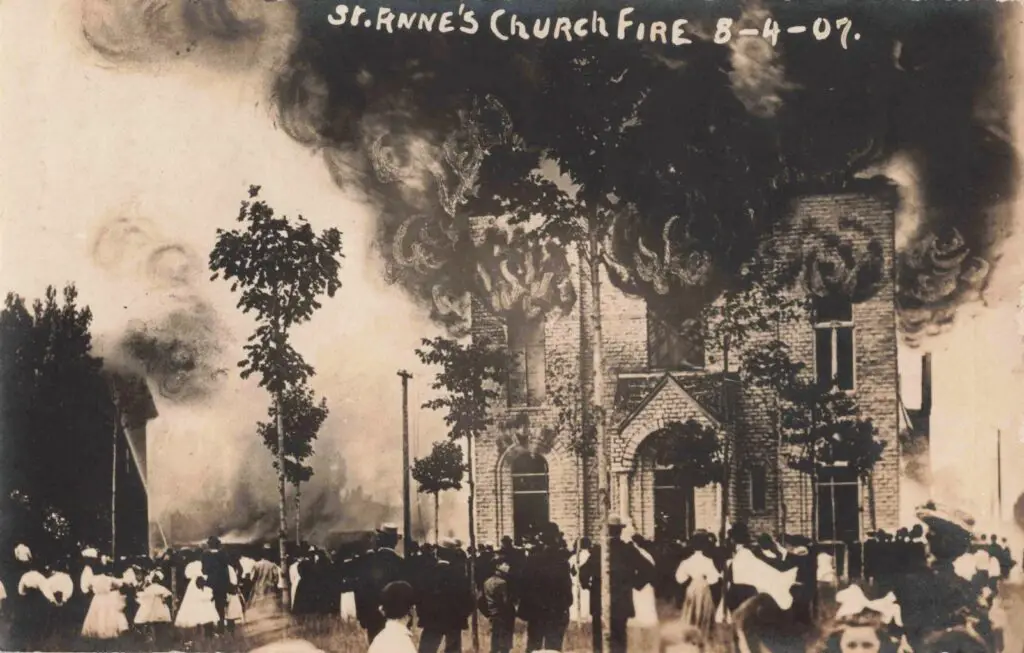
Alpena’s early days were not without disaster. In October 1871, the same Great Michigan Fire that destroyed parts of Chicago also burned most of Alpena’s wooden structures. Residents lost homes and shops to the flames. As if that wasn’t enough, attempts to rebuild were challenged by another deadly fire in 1872 that destroyed 15 acres of downtown, and yet again in 1888 more blocks went up in smoke. These repeated infernos tested the community time and again.
The fires of the 1870s and 1880s forced buildings to be rebuilt – often in brick or stone – and led to better fire safety. By the turn of the century the only thing left standing from the original town was the sturdy stone schoolhouse. Even the churches had to rise from the ashes. One vivid reminder is St. Anne’s Catholic Church: a raging 1907 fire leveled the brick church building and the adjacent school. We know this because a historic postcard shows the ruins still smoldering, a fence scorched, with the children’s school behind it.
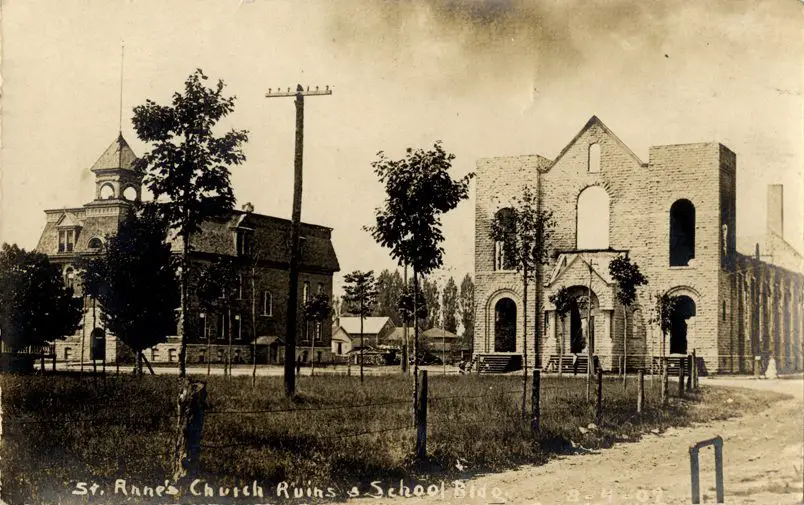
Despite such setbacks, Alpena’s residents kept rebuilding. Brick walls went up instead of wood; volunteer fire brigades grew stronger; and each time the town emerged more determined. This resilience – the idea that Alpena “wouldn’t bust” – is an important theme in the history of Alpena Michigan. No fire, no matter how fierce, could extinguish the community’s spirit.
Alpena Michigan Winter Carnival and Community Spirit
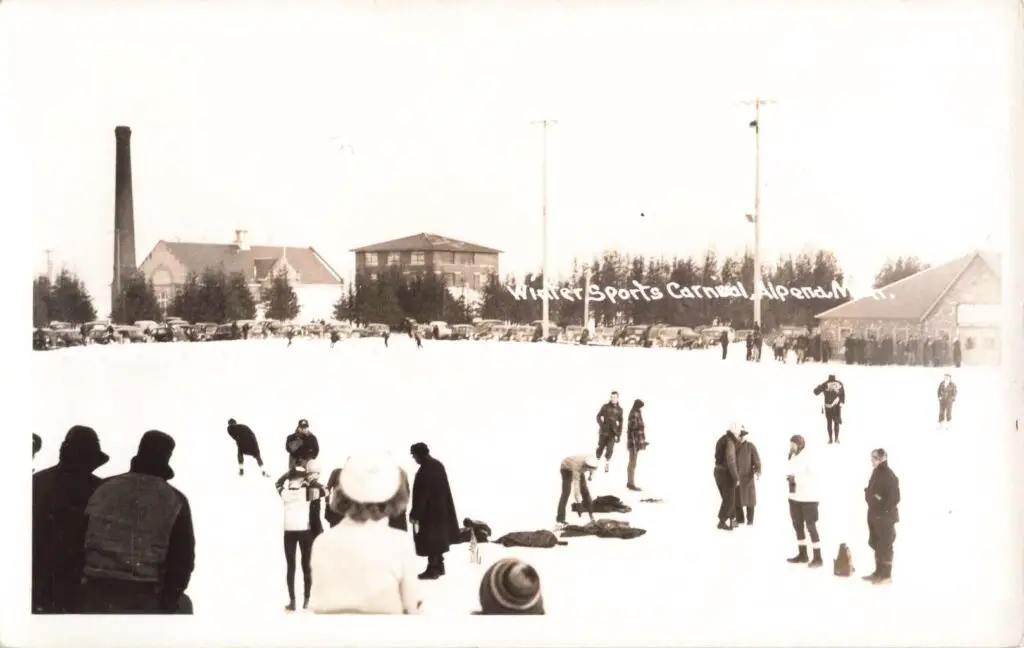
While Alpena built things, it also made memories. In the winter, the residents knew how to celebrate. Starting in the early 1930s, Alpena held an annual Winter Carnival that became a source of pride and fun for the region. Every February, people from small towns all around – even as far away as Detroit – hopped on a special “snow train” bound for Alpena. They arrived bundled in parkas, ready to watch the spectacular ice events at Mich-e-ke-wis Park.
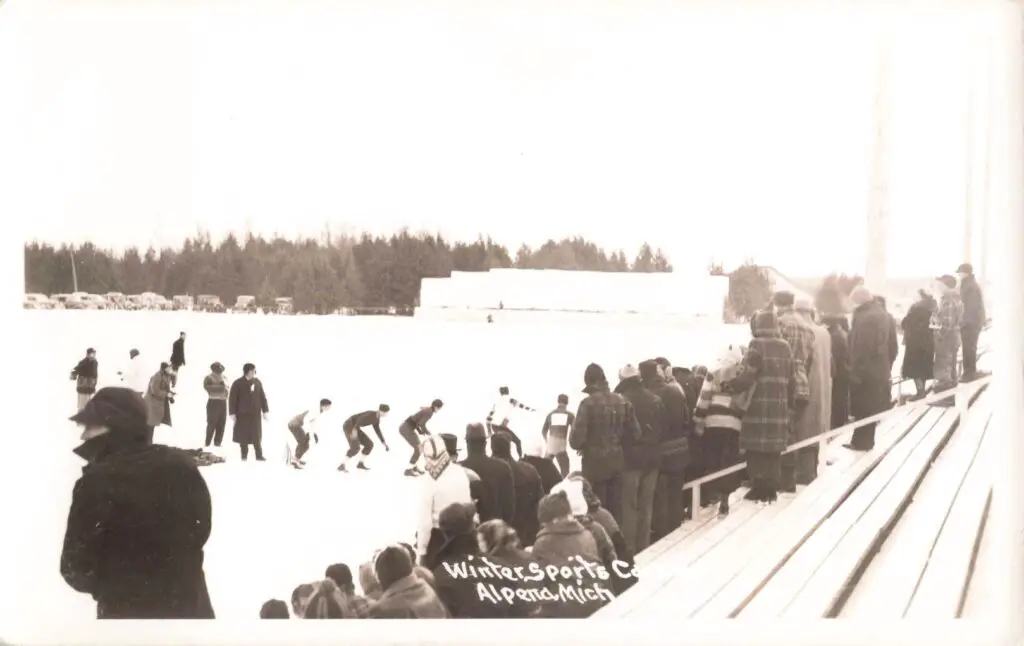
Picture it: huge crowds cheering as daredevils slide down a wooden toboggan chute that practically reaches State Street. Dozens of figure skaters spin on the big outdoor rink under floodlights. Speed-skating races whirl past. And each year, an Alpena girl is crowned Winter Carnival Queen. The first queen, Mary Meharg, received her crown in 1935, and newspapers of the time called her reign a symbol of hope during hard years (the Great Depression). Local stories say that at the carnival’s peak in the 1940s and ’50s, the whole town was jammed. Families picnicked on the ice, and teenagers proudly helped decorate downtown with icicles and flags.
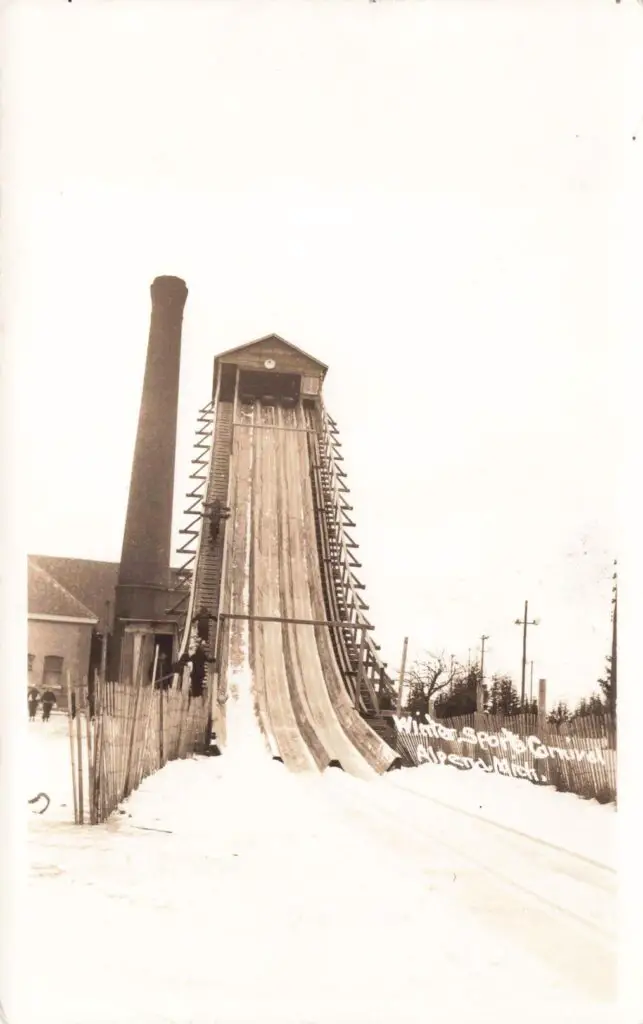
The winter festivities left lasting memories. Grandchildren still listen to grandparents laugh at stories of that “snow train” and the hot cocoa stands downtown. In the larger history of Alpena Michigan, this carnival shows the town’s close-knit character. Even as industries changed, people held onto traditions that brought everyone together, proving that a community’s wealth isn’t just measured in dollars, but in shared laughter and local pride.
Alpena in World War II and Beyond
By the 1930s, Alpena was looking forward. With the New Deal came infrastructure. In 1937 the Works Progress Administration built Alpena’s first modern airport runway. On August 31, 1931 the airfield was officially dedicated as Captain Phelps Collins Field, making it Michigan’s first state-owned airport. (Named for a World War I pilot from Alpena, Captain Collins was Michigan’s first aviator killed in the war.)
When World War II erupted, Phelps Collins Field became a training hub. From 1940 on, hundreds of young Army Air Corps pilots flocked here from Selfridge Field near Detroit. They flew dozens of P-35 and P-40 fighter planes over the forests east of town. Echoes of roaring engines and gunnery practice echoed through the countryside. Though Alpena never saw combat, the base brought new life to the economy. Young men trained in the skies while locals worked in factories and on the base. In time, after the war, the field became the modern Alpena Air National Guard base, still used for training exercises.
Through the mid-1900s, Alpena continued to grow in small ways. A local college opened in the 1950s. Factories like the Besser Company (in concrete machinery) became world-renowned. The slogan “Sanctuary of the Great Lakes” began to appear as Alpena promoted its clean waters and historic shipwrecks. Fishermen, divers, and tourists came to explore Thunder Bay’s underwater graveyard of old schooners. The town even preserved its large red lighthouse (“Little Red”) as a tourist attraction, symbolizing Alpena’s keepers of the light.
Legacy of History of Alpena Michigan

Alpena today is small but proud. Its downtown still has grand old brick buildings and murals celebrating the past. A museum tells tales of saws and steam in its vast collection. The cement plant still ships product into Lake Huron. And every winter, locals remember that one year of the snow train.
“History of Alpena, Michigan” is rich because it shows how ordinary people can thrive in the northern woods. From the Carter pioneers and loggers to inventors like the Bessers, from heroic keepers like Anna Garrity to party-throwers of the Winter Carnival, Alpena’s story is filled with character. Each generation found a way to take what nature or times gave them – be it timber, stone, or ice – and make a new tomorrow. In recounting these tales, we see that Alpena was always more than a remote outpost; it was a hub of innovation and community on the edge of the Great Lakes.

